The Genetics of Coloration in Texas Longhorns: Part 4: Spotted, Lineback, Color-Sided, and White Park Patterns
© David M. Hillis, Double Helix Ranch
Section of Integrative Biology, University of Texas, Austin, TX 78712
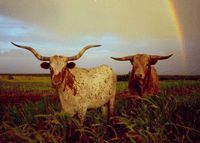
Texas Longhorns at the
Double Helix Ranch
This article is the fourth in a five-part series on the genetics of coloration in Texas Longhorn cattle. This article will be published in Texas Longhorn Trails, Volume 16, number 7 (October 2004). If you have comments or questions about this article, please e-mail me.
This article is intended for a general audience of Texas Longhorn breeders, rather than a technical audience. However, some scientific jargon is unavoidable, so if any of the terms are unfamiliar, please see the Glossary.
Over the past several months
I’ve discussed how Texas Longhorns inherit the color of their coats.
These colors include the various combinations of red and black pigments
that produce the broad spectrum of colors observed in the breed. However,
I haven’t said much to this point about the various patterns that
result from a lack of any pigment. In other words, how are patterns that
involve white hair produced?
Many people seem to think of cattle as basically white, with various colors
added across the coat in different patterns. However, every Texas Longhorn
has an underlying color (black, red, or wild-type), but may have additional
genes that keep that color from being expressed on certain parts of the
body. So, we should actually think of all Longhorns as colored, with some
areas of color removed from the coat in different patterns (to produce
white). Even Texas Longhorns described as “white” are not
completely white, even though the colored hairs may be limited to the
ears. The inheritance of the various patterns of white is not simple,
and involves a number of different genes, all of which can act in combination
to produce a multitude of patterns.
I’ve often heard Texas Longhorn breeders suggest that white coloration
is dominant. That isn’t quite right, as mostly white animals are
only produced if certain genes are present together in combination. However,
several different genes (in the right combination) can produce a mostly
white animal, and so it is true that white Longhorns are produced quite
commonly, even from highly colored parents.
One gene that controls patterns of white coloration is known as the Spotted
gene. There are three known alleles (forms of the gene) that occur in
Texas Longhorns, and it is likely that additional alleles of the gene
exist in the breed that have not yet been described. The form of the gene
that was thought to be present in wild aurochs is abbreviated S+,
and if an animal is homozygous for this allele, then it will be solid
colored (if we ignore other white-producing genes for the moment). Another
allele of this gene is abbreviated SP,
and is called the lineback allele (the subscript P stands for
Pinzgauer, the breed in which the allele was first described). The SP
allele is incompletely dominant, meaning that a heterozygous SP/S+
animal will show some degree of the lineback pattern (similar to the pattern
seen Figure 1), but a homozygous SP/SP
animal will show much more of the white coloration (Figure 2). Longhorns
that are heterozygous for the lineback and solid alleles usually show
a small area of white coloration running from the topline across the rump
and down to the belly, although the white may be restricted to the rump
in some cases. In some animals that are heterozygous for the lineback
allele, the white is barely noticeable, and the animal may even be described
as “solid,” although small patches of white will be visible
on the rump and tail.
The third allele for the Spotted gene that occurs in Texas Longhorns
is the recessive s allele. Animals that are heterozygous for
the lineback and spotted alleles (SP/s)
exhibit the pattern seen in Figure 1. Animals that are homozygous for
the s allele are spotted (Figures 3 and 4). However, the degree
and size of the spotting varies widely, depending on interactions with
other genes (e.g., compare Figure 3 and Figure 4). One of the genes that
interacts with the Spotting gene produces the larger spots, as
well as colored legs and head, seen in the bull in Figure 3 (I’ll
discuss this modifying gene in more detail in Part 5 of this series).
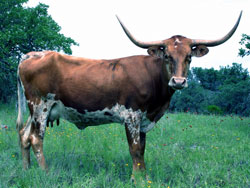
Figure 1. A young Texas Longhorn cow (D-H Red Dawn)
that is heterozygous for the lineback and spotted alleles at the Spotted
gene (SP/s). Animals with this
genotype show varying amounts of white coloration, although there is usually
some white present on the topline, rump, and belly. Animals that are heterozygous
for the lineback and solid alleles (SP/S+)
exhibit a similar pattern, but without the spotting in the white areas.
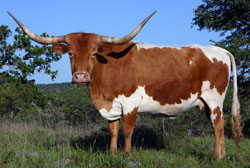
Figure 2. A cow (Sweet Donna) that is homozygous
(SP/SP)
for the lineback pattern. Notice that there is much more white along the
topline and belly compared to the cow in Figure 1. Note the solid coloration
on the head, which helps distinguish this pattern from color-sided (compare
to Figure 5).
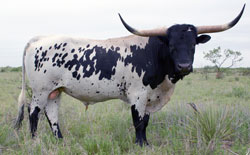
Figure 3. A bull (D-H Shogun) that is homozygous
for the recessive spotting allele (s/s). The exact pattern of
spots produced by this gene is highly variable, and is modified by other
genes. This bull’s sire (Overlord
CP), grandsire (Emperor), and granddam
(Kimco 5) were all homozygous for this gene as
well, and each exhibited varying degrees of spotting.
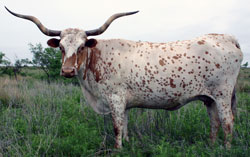
Figure 4. This cow (Fairy Tail) is also
homozygous for the recessive spotting allele (s/s), although the size
and distribution of spots is considerably different from the bull shown
in Figure 3. This cow is a daughter of Impressive,
and her pedigree goes back to Measles
2849 on both sides. This Longhorn family often produces offspring
with small spots.
A pattern that is often confused with the lineback pattern, but which has a completely different genetic basis, is known as the color-sided pattern (Figure 5). The color-sided and lineback patterns are superficially similar, but are produced by different genes. Solid animals are homozygous for the recessive allele (cs+) at the Color-sided gene (in addition to being homozygous for the S+ allele at the Spotted gene). Animals with one copy of the partially dominant color-sided allele (Cs) show some variant of the pattern seen in Figure 5, with an irregular border to the colored area, and typically a spotted or “lacey” face. The exact expression of the pattern is variable, and in black animals (with at least one copy of ED at the Extension gene), heterozygous Cs/cs+ animals may even appear to be blue roans. However, animals that are homozygous for the Cs allele are mostly white, with very small areas of coloration (usually on the ears and feet, as seen in Figure 6, but sometimes with small spots elsewhere on the body as well). This is the White Park or “flea-bitten” pattern that is common in Butler cattle. Not all Longhorns with this pattern are homozygous for the Cs allele, however, for the same basic pattern is also produced through various interactions of the Color-sided, Spotted, and Roan genes. The pattern of the cow shown in Figure 6 results from interaction among two of these three genes (in this case, the Color-sided and Spotted genes).
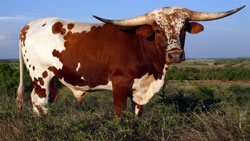
Figure 5. Comanche 22, a two-year old Butler
bull with the classic color-sided pattern (note the dappled face and irregular
border of the colored area). This same basic color pattern can
be seen in this bull’s paternal lineage going back to Milby
Butler’s bull Bevo.
The color-sided allele is common among Butler cattle, in part because
two of the most famous Butler Longhorns, Bevo
and Beauty, were both heterozygous Cs/cs+
for the Color-sided gene (and therefore both showed the color-sided
pattern). Several of their famous offspring, such as Classic
and Lady Butler, were homozygous Cs/Cs,
and so showed the White Park or flea-bitten coloration, as did Lady
Butler’s son by Bevo, Monarch
103. The color-sided gene is therefore quite common in Butler Longhorns,
in large part because of the popularity of these lineages. In fact, the
color-sided pattern of the Butler bull shown in Figure 5 is from a long
line of mostly color-sided bulls that trace back to Bevo
(Bevo to Classic
to No Double to VJ
Tommie to VJ Nestor to Comanche
22). Of these bulls, all were heterozygous Cs/cs+ (and therefore
color-sided) except for Classic,
who was homozygous Cs/Cs (and therefore mostly white).
Many breeders and buyers seem to discount the price of Texas Longhorns
that are mostly white, apparently out of fear that they will produce mostly
white offspring. However, white Texas Longhorns do not necessarily produce
white offspring, depending on the genetic make-up of the dam and sire
in the breeding. For instance, consider the cow shown in Figure 6 (L
Brilliant Mary). As I mentioned above, the White Park pattern of this
cow is the result of an interaction of two heterozygous genes (Color-Sided
and Spotted). This means that despite her mostly white coloration,
she can produce a very wide diversity of color patterns in her offspring,
including solid, color-sided, and spotted. In addition, because she is
homozygous for the recessive e allele at the Extension
gene, she can produce red, wild-type (including brindle and other variants),
or black (including grulla) calves, depending on which bulls are used
with her. As this example demonstrates, some mostly white cattle (such
as L Brilliant Mary) can produce a very
wide diversity of colors and patterns in their offspring. So, for the
breeder who likes color and pattern diversity, these cows can be highly
desirable. Often, it is possible to determine the genotype of such cows
by examining their ancestors and previous offspring.
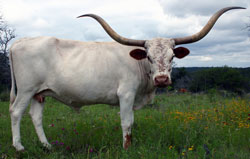
Figure 6. L Brilliant Mary, a Texas Longhorn
cow with the White Park pattern. Several different genetic combinations
can produce this pattern (e.g., homozygosity of the Cs allele
at the Color-sided gene, as well as various interactions among
the Color-sided, Spotted, and Roan genes).
The diverse and interesting interactions of the Color-sided gene
with other genes often confound breeders of Texas Longhorns. For instance,
the interaction of the color-sided allele (when heterozygous) with black
coloration to produce blue roans explains why some breeders have experienced
difficulty trying to breed for the blue roan coloration. Roan coloration
is also produced by yet another gene, called Roan (one of the
subjects of Part 5 in this series). Therefore, roan-colored Longhorns
can have several different genetic backgrounds, and so breeding for roan
coloration is not necessarily as simple as breeding a roan bull with a
roan cow. Many offspring of a blue roan bull (in which this color results
from an interaction of the Color-sided and Extension
genes) will be color-sided, flea-bitten, or solid colored. Next month,
I’ll discuss an example of this type of mating to illustrate the
complex interactions of the white-producing genes.
Want more detail? Please see the following papers:
Additional Reading and References
Joerg, H. et al. 1996. Red coat color in Holstein cattle is associated with a deletion in the MSHR gene. Mammalian Genome 7: 317-318.
Klungland, H. et al. 1995. The role of melanocyte-stimulating hormone (MSH) receptor in bovine coat color determination. Mammalian Genome 6: 636-639.
Lauvergne, J. J. 1966. Génétique de la couleur de pelage dex boivins domestiques. Bibliographia Genetica 20:1-168.
Olson, T. A. 1980. Choice of a wild-type standard in color genetics of domestic cattle. Journal of Heredity 71:442-444.
Olson, T. A. 1981. The genetic basis for piebald patterns in cattle. Journal of Heredity 72:113-116.
Olson, T. A. 1999. Genetics of Colour Variation. In The Genetics of Cattle (R. Fries and A. Ruvinsky, eds.). Pp. 33-53. CABI Publishing, Wallingford, United Kingdom.
Robbins, L. S. et al. 1993. Pigmentation phenotypes of variant extension locus alleles result from point mutations that alter MSH receptor function. Cell 72:827-834.